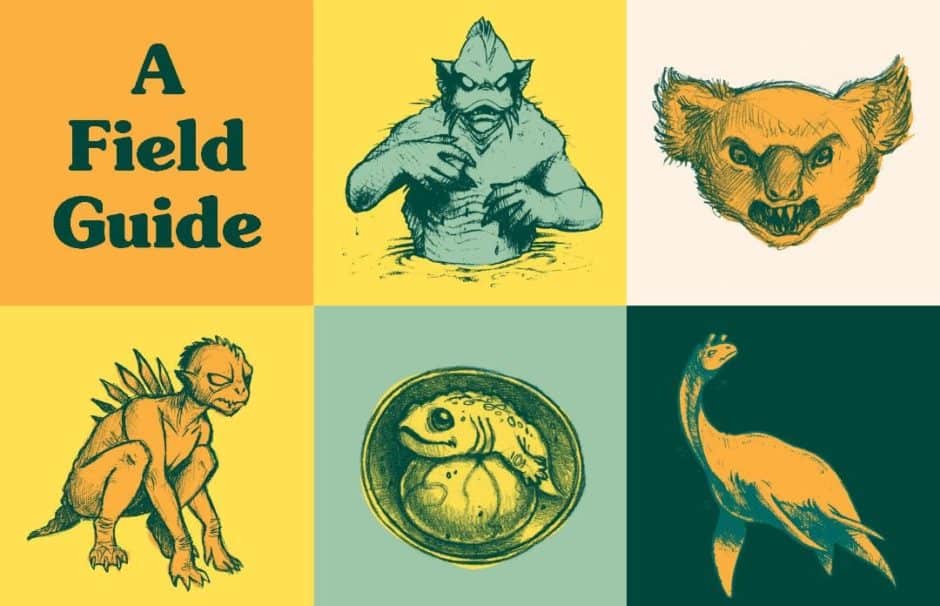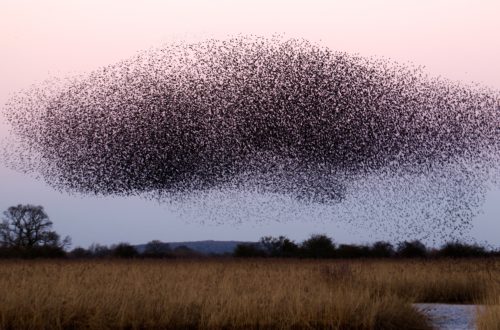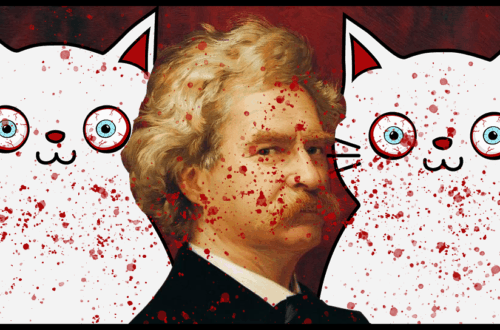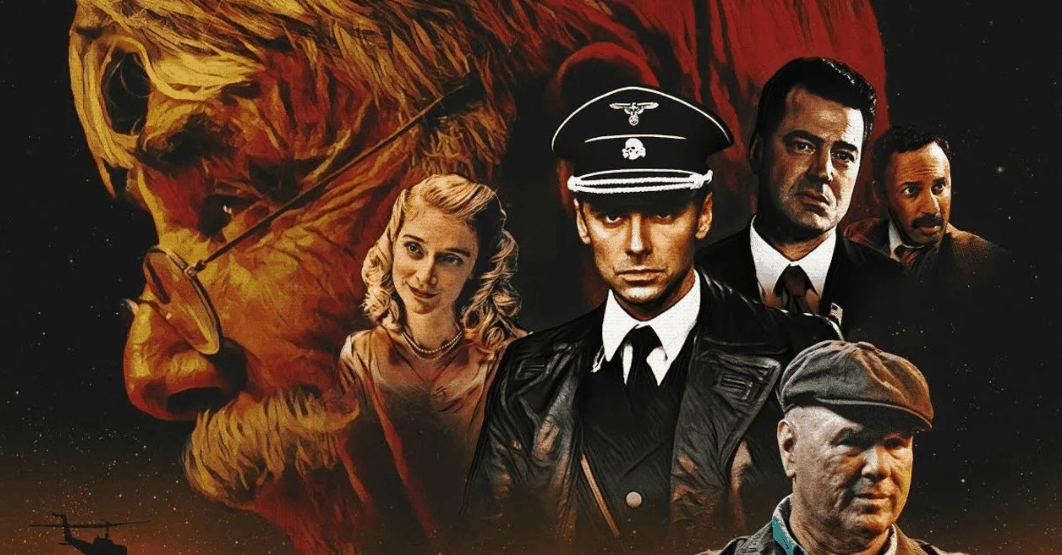Kelly Milner Halls and Rick Spears go way back. Not as far as the legends featured in their work, but far enough to have worked on eight projects together, including their latest book Cryptid Creatures, which just hit the real (and cyber) shelves today.
Cryptid Creatures is a field guide featuring 50 mythical animals (AKA cryptids). Each entry presents a description of the creature, its history, and evidence suggesting that it exists—which often includes colorful accounts told in newspaper articles. Every cryptid also gets a “reality rating” represented by a scale of 1-6 stars. One star means the cryptid has been confirmed as a hoax, while six stars means the once-mythical creature has been proven real.
Cryptids covered in the book range from well-known beasts like Bigfoot and the Loch Ness Monster, to the more obscure—such as the Iliamna Lake Monster of Alaska (which has the head of a wolf and body of an orca whale) and the Con Rit (a centipede purported to be larger than any known shark).
The creature illustrations depict the beasts in two stages of their lives, both as full-grown monster legends, and also as baby beasts—when the creatures were nothing but whispered tales around the campfire.
Halls is a prolific children’s book author and freelance writer, and Spears is an illustrator and sculptor with a focus on animals, science, and natural history.
I talked to both about the artistic inspiration behind Cryptid Creatures, why cryptids should be examined like real animals, and how they bonded over the bizarre in the first place.
So how did you two meet?
K: Well, I was working on this book called Dino-Trekking in 1996, and I was looking for a paleontology expert from Georgia State to interview. And some guy in Georgia—I can’t remember who it was—said, “You really shouldn’t be talking to me, you should be talking to Rick Spears. He’s everything dinosaur.” And I said how do I get a hold of him?
R: He made it seem like I was a crackpot or something.
K: Well, so was I, so it worked out. Rick was just the best; he and I talked and he asked. “Who is illustrating the book?” And I said we don’t have a budget for illustrating, and he said, “Well, I’ll do it for free.” And I said, ‘“This guy is the best guy ever!”
How can you afford to do a project like that for free?
R: I have this philosophy that there are some things that should exist no matter the cost or lack of cost, so I’ve been known to work for free for good ideas if people have them. And you know, I can do it. I have a roof over my head, I make enough money at my regular job, and if I can help somebody else out, I’m gonna do it.
K: He also has mad skills.
R: Plus I got a few copies of the book, which was kinda cool because it was the first real book I worked on.
K: He also got seven book deals off of that later, so that’s not too bad. Together, we’ve both worked on Dino-Trekking, Dinosaur Mummies, Tales of the Cryptids, Dinosaur Parade, Mysteries of the Mummy Kids, In Search of Sasquatch, Alien Investigation…
R: And then of course, Cryptid Creatures—the feel good field guide of 2019.
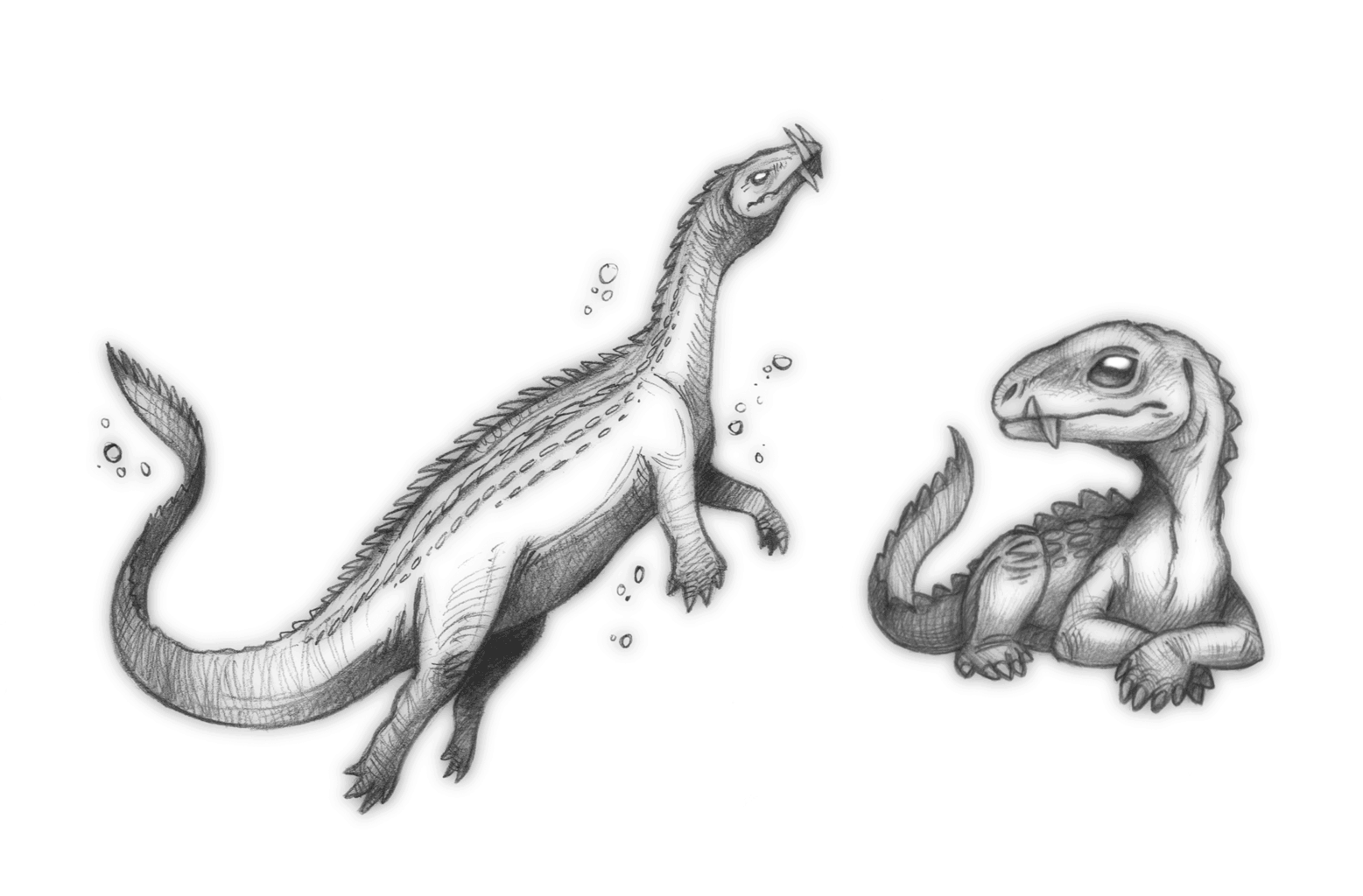
Kelly, how long have you been writing?
K: I studied journalism in college and thought I was going to be an investigative reporter. Then I realized I didn’t have the mean streak to be that tough, so I decided to write for kids. I started freelancing in about 1987 and I freelanced for a long time. In the children’s market, a lot of magazines buy all rights, and all my writing friends were saying, “You’re supporting the corporate machine! You need to start writing books so you get a royalty.” So I tried that and have been doing that ever since. I freelance every once in awhile if there’s something interesting I want to cover.
Rick, how long have you been artisting?
R: Since I was a kid, when my dad used to bring home old copy paper and I’d draw on the back of it. I’ve never known a time when I wasn’t drawing. But professionally, I got a degree in graphic design from the University of Georgia with a focus on illustration, and I work non-stop.
K: Rick can take something speculative like aliens or a sasquatch and turn it into something that feels possible. A lot of the illustrators make fun of the cryptid material; you can see skepticism in their artwork. But when Rick takes on a topic he endows it with something living—and the kids love it too.
R: Well, yeah. When I’m drawing cryptids, I think of them as animals, living organisms. They follow the same rules of physics we do, and do what we do: they eat, they sleep, walk around.
K: I can also trust Rick to go to scale. Other illustrators, they have fun with drawing cryptids, but they don’t check the science. Even though some of my books involve the question of whether something is real or not real, when I do a book I want to find the best information possible, and I want somebody to work with who is going to be on the same page and have respect for the material too. When I was putting this book together, I really wanted to go for the gold. If confronted by someone who might say, “Where’d you get this information from? Wikipedia?” I wanted to be able to point to the bibliography and show I did my job. And almost every single cryptid—I think there were two where I couldn’t find a solid newspaper article or magazine—has a substantial source behind it.
Rick, do you have any artistic influences?
R: I love the work of Charles Knight, illustrator and painter of prehistoric things from the late 1800s. He breathed life into things. He would go out and observe animals in zoos and then apply the characteristics to the prehistoric monsters he drew. Well, people would call them monsters, but they were prehistoric animals. Once I was reading an encyclopedia and there was a picture of one of his paintings and I thought it was a photograph.
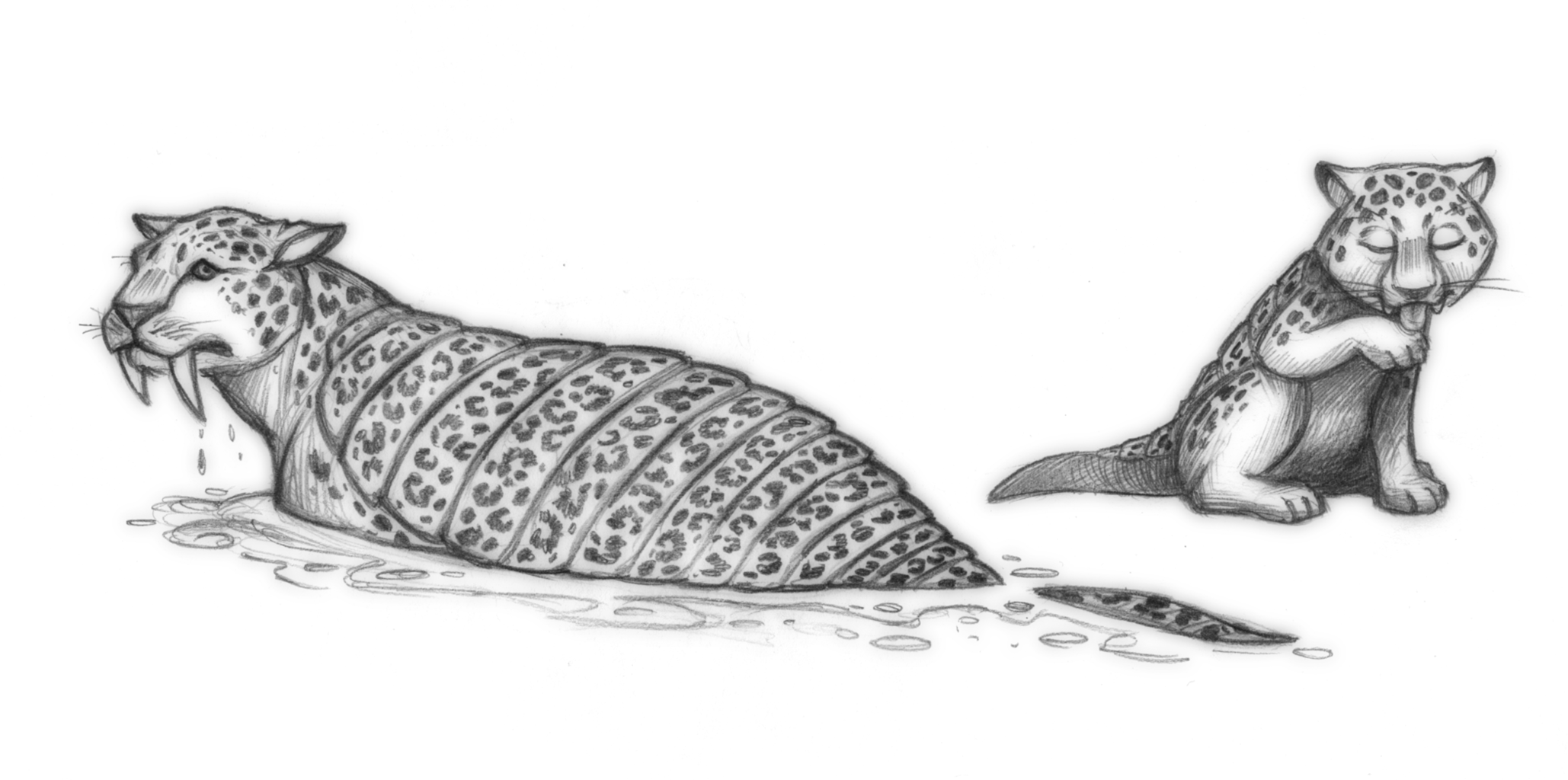
Do you believe cryptids are real?
K: Do I believe they’re all real? No. I think in some cases people had too much party punch. But you know, they reported to the newspaper that they saw it. So if it was in the Boston Globe, then it’s in my book. When it comes to writing children’s books, kids don’t want you to tell them if something is real or not; they want you to give them the evidence, then let them decide. Because God knows, young readers aren’t empowered in any way, shape or form. For the most part, they’re completely controlled. Giving them choices isn’t a bad thing, and it’s a good exercise. I mean, I believe in the possibility of Bigfoot at this point—and I didn’t believe that 12 years ago when I started all this.
Over and over again I’ve heard these stories from people who didn’t care about seeing Bigfoot, didn’t want to see him, and they’d end up seeing him! And they’re reliable people. I mean, you hear from some of the tin foil hat guys, but once you hear enough people who are credible you start to think… this isn’t what I thought it was gonna be.
I interviewed this truck driver who went on a Bigfoot hunting thing, and he only went to play with his new night vision goggles and he was walking back to his truck and heard a noise, and he turned around and it was a bigfoot, and said he wet his pants. And I thought, “What kind of burly truck driver would tell a woman that he wet his pants when he saw Bigfoot?” He said it was so big and so scary and he didn’t know what to do, and he was glad when the bigfoot ran away.
That truck driver was one of the most amazing interviews I’ve ever had, and I think he’s legit. But who knows? I could be wrong.
What about you, Rick?
R: Oh me? I’m real.
K: Rick…
R: Okay, okay. So I think people are seeing something, but if it’s really a bigfoot, we don’t know because we weren’t there. A lot of times there’s no evidence, there’s only word of mouth. There’s times I think there’s a chance that they’re real… and then I look at the evidence and I think it’s all faked—including the Patterson/Gimlin film. I think the worst thing that happened to the PG film, in terms of proving Bigfoot’s validity, is when people stabilized the footage. There are wrinkles in the suit, but people explain it away in a dozen different ways. Basically, when it comes to the question of whether I think Sasquatch is real, I’m not saying no, but I’m not saying yes.

What inspired the baby cryptids featured in the book?
R: Well, when a mommy cryptid and daddy cryptid love each other very much…
K: She’s not asking how a baby is made, pinhead!
R: Oh, right. Sure, okay… We had talked about doing a book on baby cryptids.
K: Yeah, still a work in progress.
R: I looked at this opportunity and thought about what my options were to fill page space. Sure, I could have drawn yet another bigfoot walking to the left or a bigfoot walking to the right, or I could draw another footprint. But instead, I chose to draw babies and young cryptids, because it kept the illustrations fresh.
My favorite is the one of the baby Yeti rolling a snowball. It was inspired by a National Geographic photo of this Japanese monkey carrying a snowball. So some of the cryptids in the book are babies, some are kid versions. The Beast of Busco [a giant snapping turtle that could feed on deer] is an egg! Just a round egg. It was so much fun. My favorite part of the book was drawing the babies! I’ll also add that my least favorite part about drawing these creatures was figuring out what to do with the genitals. It’s always a thing when you draw animals. Like the mermaid, she’s got her arm just so, so you don’t see her breast. Some have their legs crossed and off the side. I mean, you probably don’t want to have a full-on view of Bigfoot… probably.
I loved the differences between the adults and the children. Like the New Jersey Devil looks so evil, and then you see the New Jersey Devil foal with its big eyes and sweet features. Thinking about these cryptids as children gives them a timeline, orients them into space, gets readers thinking of how they could have grown or come to be.
K: I know! They don’t start evil. They grow into it. I also love the skeletal features that he used.
R: I wanted to bring them down to Earth and make them real animals. Because you know, if they exist….
K: Then they exist completely.
R: Yeah. They had to start off as babies and had to have parents and would have bones in their heads.
How did you decide which cryptids to incorporate into the book and which ones to nix?
K: Rick made a lot of decisions about which ones to use. I’d send him a list and he’d say, “Agh! Don’t use that one! That one is terrible.” So I figured if he didn’t want to draw a specific cryptid then it wouldn’t be fun, so we’d skip it. But he had to draw some he wasn’t crazy about. What was that one you really didn’t like drawing, Rick?
R: The Pugwudgie! A little troll thing. Like an elf. Too magical and more fantasy-related.
K: For the most part, we steer away from from fantasy stuff. Like we would never put a unicorn in one of our books.
R: Or a vampire. Or a vampire unicorn.
K: Apart from the Chupacabra. He’s a vampire.
R: Oh, yeah. He’ll drink from a goat like it’s a juice box.
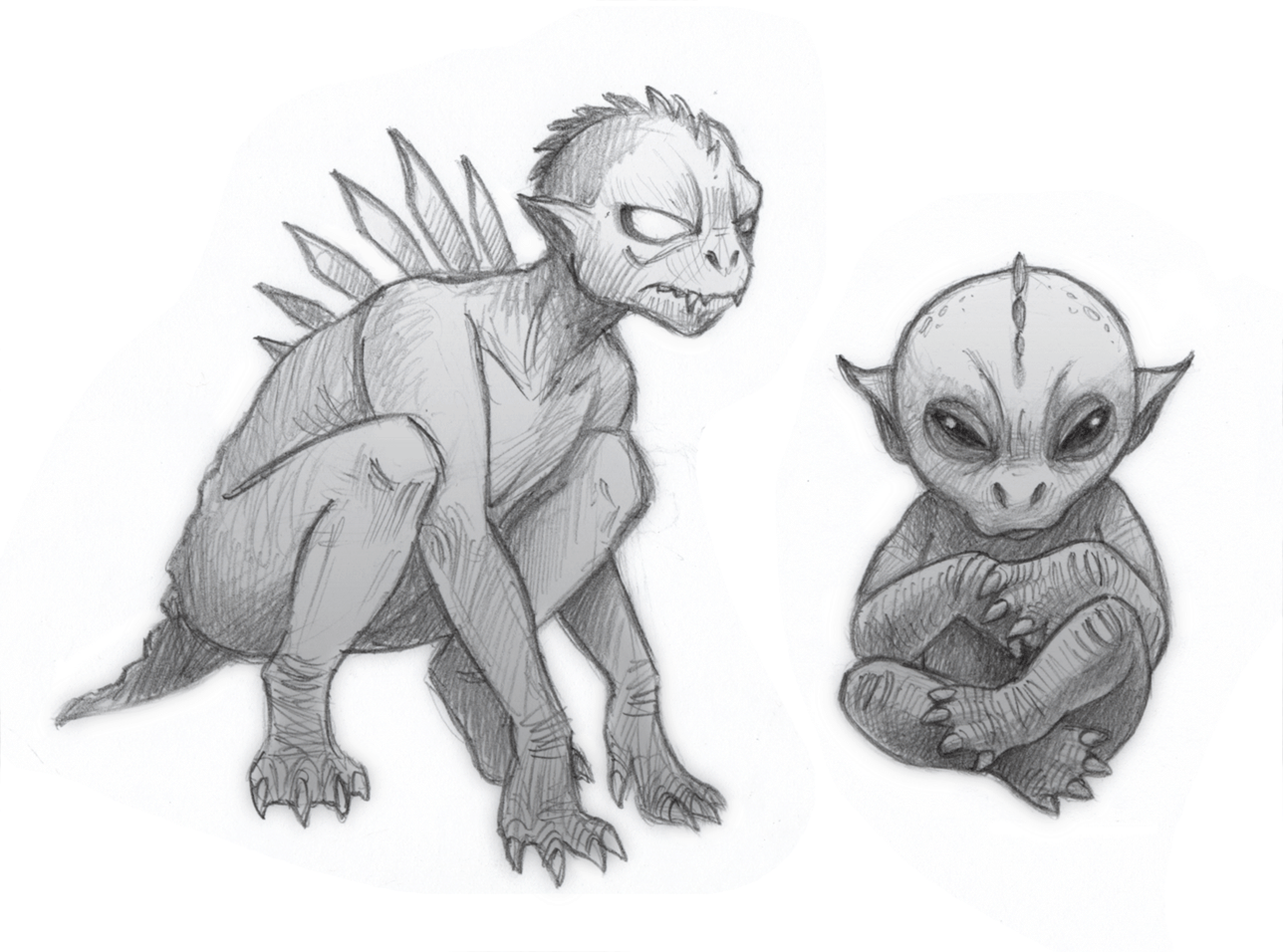
How did you decide which encounters and personal stories to include for each creature? It seems like you probably had a ton to choose from.
K: I wanted to go for the most credible source. I didn’t want to feature a sighting that some random person posted at bottom of blog, so I included anecdotes that came from reputable news sources. Part of the reasoning for this is that I want to get kids to source things themselves and engage their critical thinking process. I want them to think, ‘Well, maybe this is true. But I’m gonna look it up!’ When I give talks to kids, we discuss critical thinking. Like how did this dinosaur get sourced back to prehistoric times? How do I know what albino animals are? How do I know this dog saved someone from a railroad track? Those are great stories, but are they true stories? Critical thinking is how you tell the difference.
When it comes to Cryptid Creatures, are there any key takeaways for readers?
R: Well, what I want people to take away is the book—but pay for it first.
K: Yeah, totally.
R: I’d also like them to think of cryptids as real animals and think about the possibility of them existing on Earth.
Why should readers think of cryptids as real animals?
K: Because we’re discovering new animals every day. There are always new discoveries—it may or may not be a big sasquatch, but every person on the planet could go out into the wilderness and see something no one has seen before.
R: The African gorilla was once a cryptid. You just never know. All you have to do is find that one piece of evidence and a cryptid becomes a non-cryptid.
K: Also, these cryptids were real to the eye-witnesses who saw them. That counts.
This interview has been edited for length and clarity.

